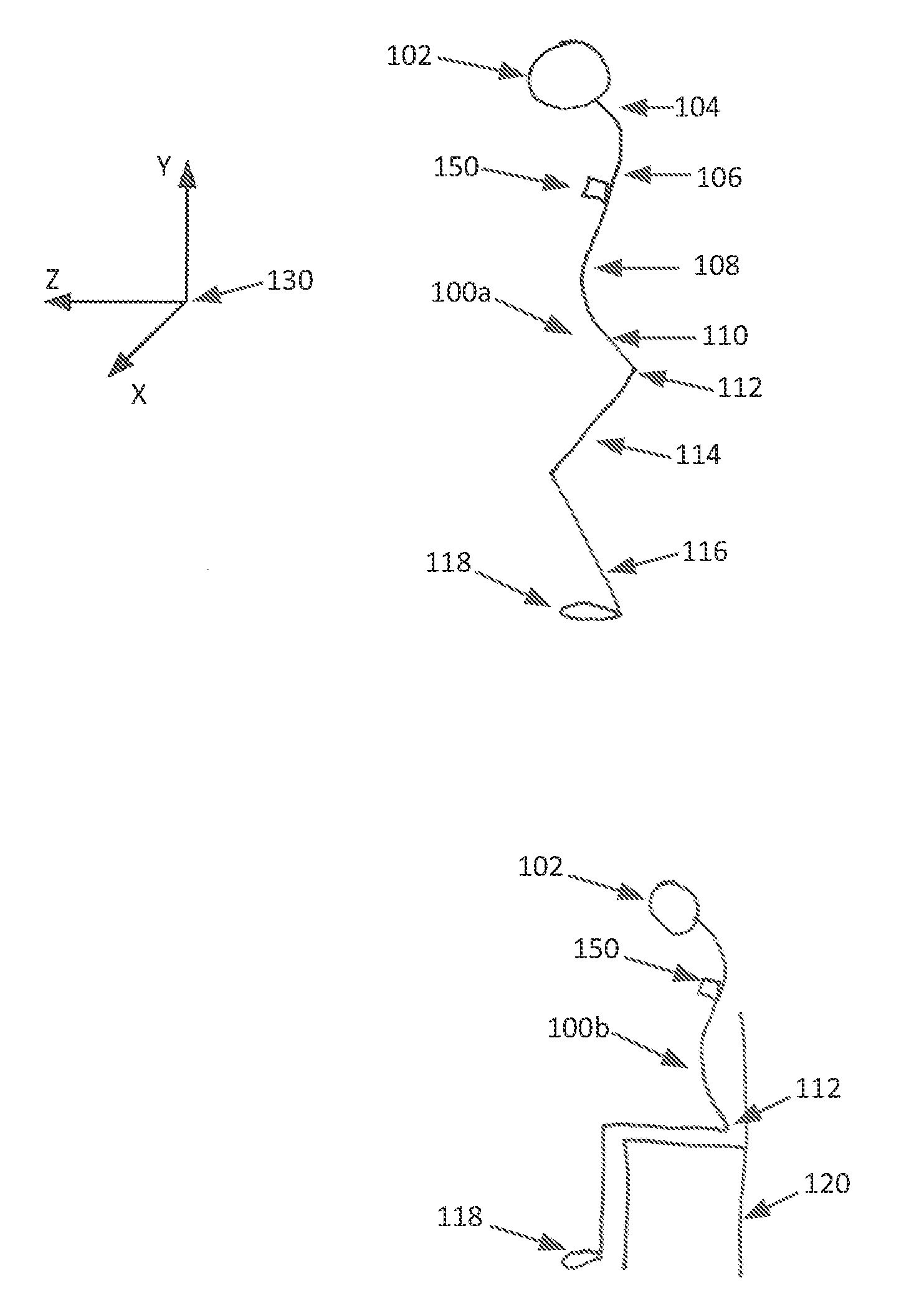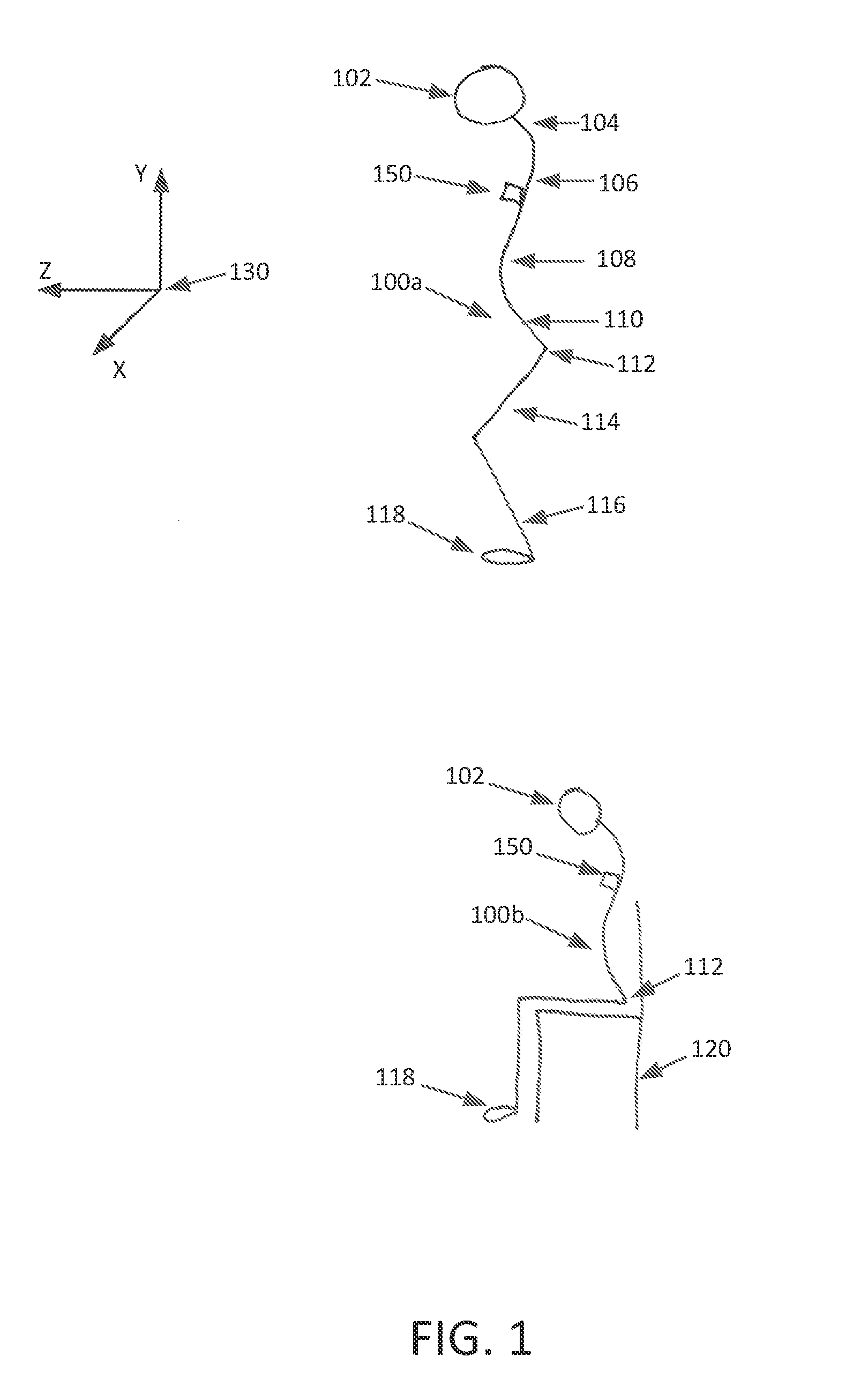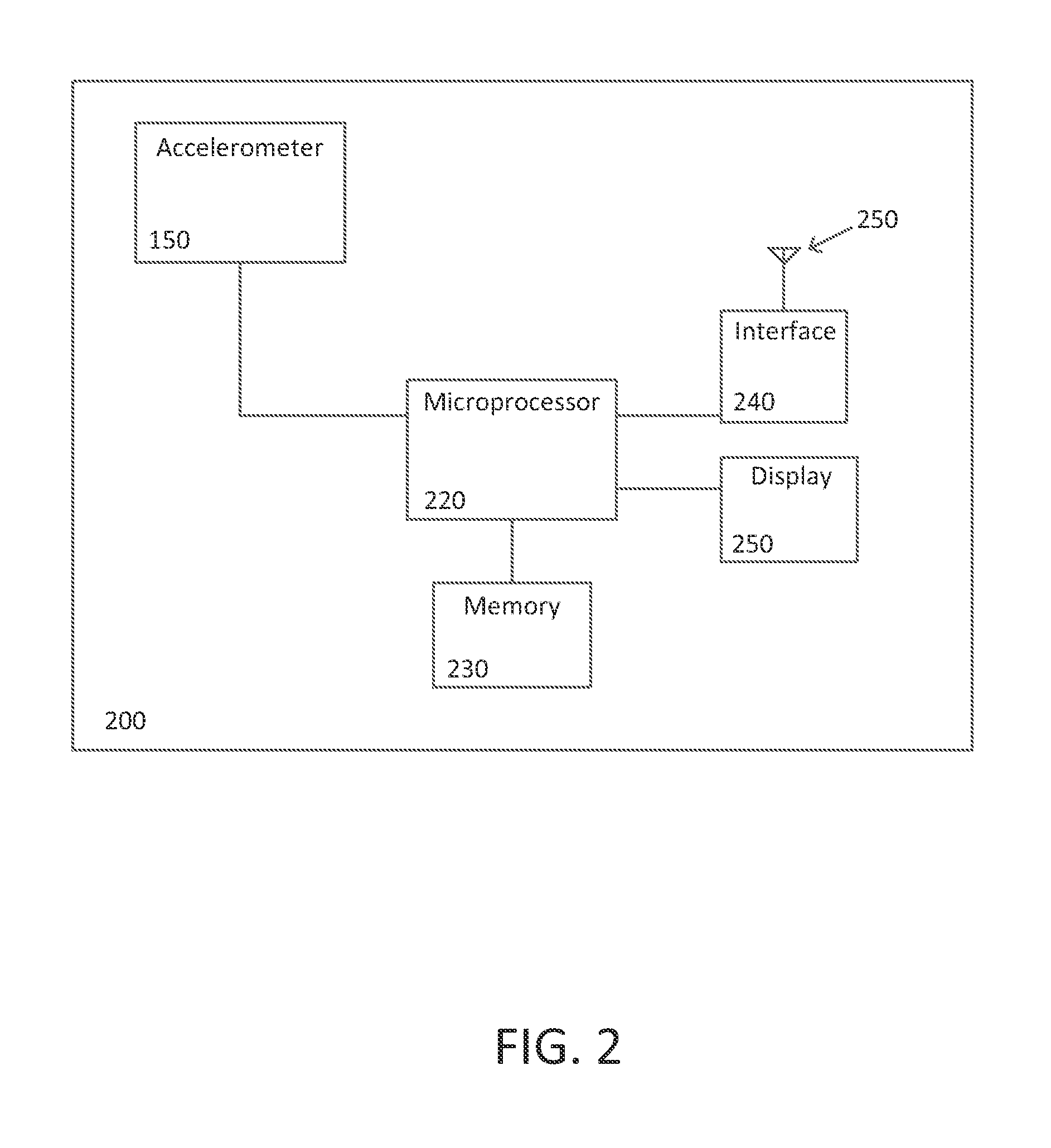System and method for detecting transitions between sitting and standing states
a technology of standing state and system, applied in the field of biomechanical sensors, can solve the problems of not being able to detect the transition between sitting and standing state, unable to produce vertical distance over time using only data from an accelerometer in the real world, and introducing errors in the acceleration data of accelerometers, noise, offset errors,
- Summary
- Abstract
- Description
- Claims
- Application Information
AI Technical Summary
Benefits of technology
Problems solved by technology
Method used
Image
Examples
Embodiment Construction
[0036]Presented herein are various embodiments of a sensor device and methods for using the sensor device to detect a transition between sitting and standing states.
[0037]The sensor device comprises a tri-axial accelerometer coupled to a microprocessor which analyzes directional movement data captured by the accelerometer. When the accelerometer is attached to a user, the microprocessor analyzes captured accelerometer data indicative of a user's motion in three dimensions (x, y, z) in real-time to determine a user's movement state (e.g., standing, sitting, lying, running, or walking) and to detect transitions between states, such as detecting transitions between sitting and standing states.
[0038]To detect a transition between sitting and standing states, the accelerometer can be attached anywhere on the head or torso of the user, including but not limited to the head or neck, or on the torso such as along the spine, or on the chest or abdomen.
[0039]In an embodiment, accelerometer da...
PUM
 Login to View More
Login to View More Abstract
Description
Claims
Application Information
 Login to View More
Login to View More - R&D
- Intellectual Property
- Life Sciences
- Materials
- Tech Scout
- Unparalleled Data Quality
- Higher Quality Content
- 60% Fewer Hallucinations
Browse by: Latest US Patents, China's latest patents, Technical Efficacy Thesaurus, Application Domain, Technology Topic, Popular Technical Reports.
© 2025 PatSnap. All rights reserved.Legal|Privacy policy|Modern Slavery Act Transparency Statement|Sitemap|About US| Contact US: help@patsnap.com



